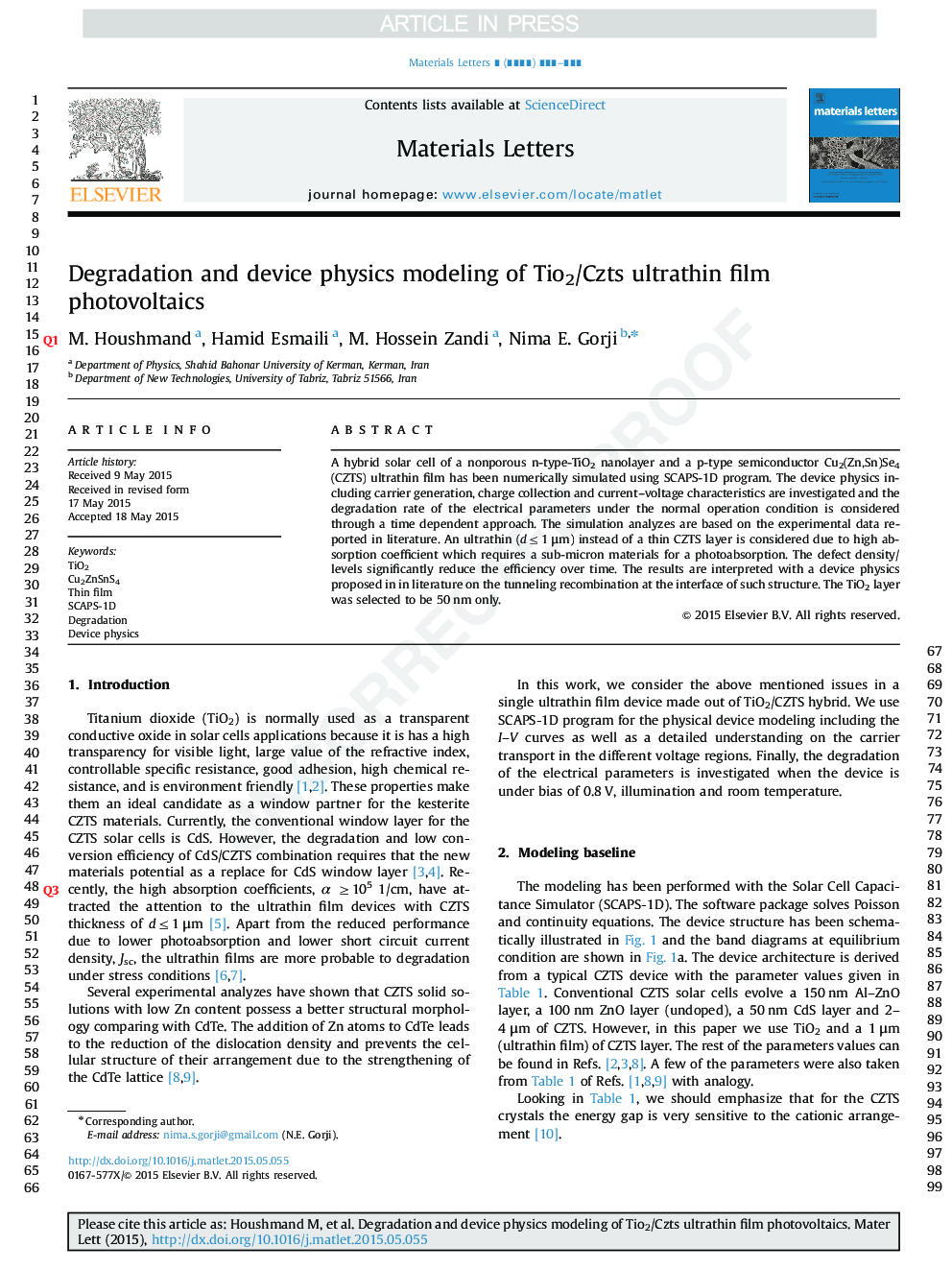| Article ID | Journal | Published Year | Pages | File Type |
|---|---|---|---|---|
| 8018041 | Materials Letters | 2015 | 4 Pages |
Abstract
A hybrid solar cell of a nonporous n-type-TiO2 nanolayer and a p-type semiconductor Cu2(Zn,Sn)Se4 (CZTS) ultrathin film has been numerically simulated using SCAPS-1D program. The device physics including carrier generation, charge collection and current-voltage characteristics are investigated and the degradation rate of the electrical parameters under the normal operation condition is considered through a time dependent approach. The simulation analyzes are based on the experimental data reported in literature. An ultrathin (dâ¤1 μm) instead of a thin CZTS layer is considered due to high absorption coefficient of such materials which allows a sub-micron layer to be adequate for complete photoabsorption. The defect density/levels significantly reduce the efficiency over time. The results are interpreted with a device physics proposed in in literature on the tunneling recombination at the interface of such structure. The TiO2 layer was selected to be 50 nm only.
Related Topics
Physical Sciences and Engineering
Materials Science
Nanotechnology
Authors
M. Houshmand, Hamid Esmaili, M. Hossein Zandi, Nima E. Gorji,
